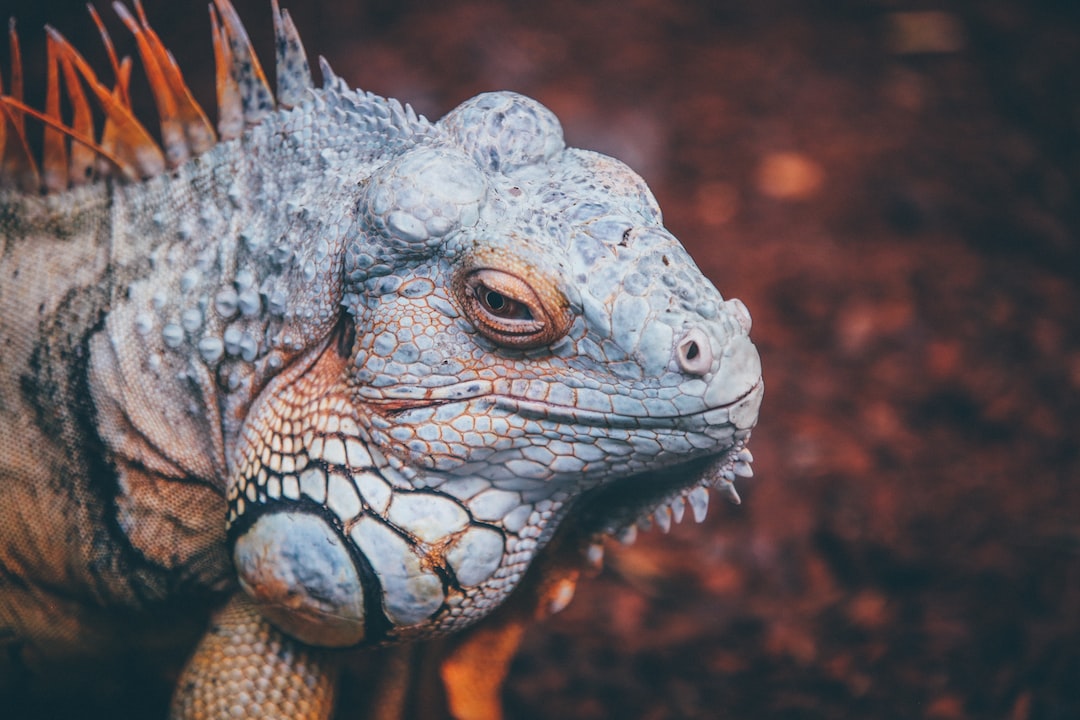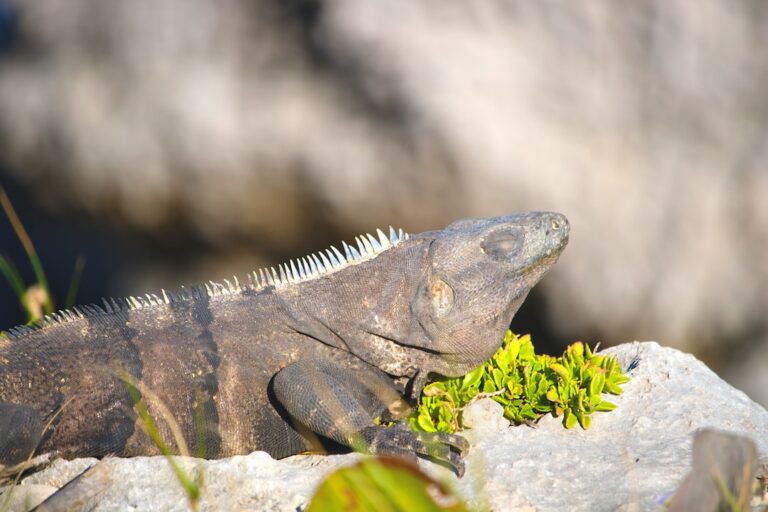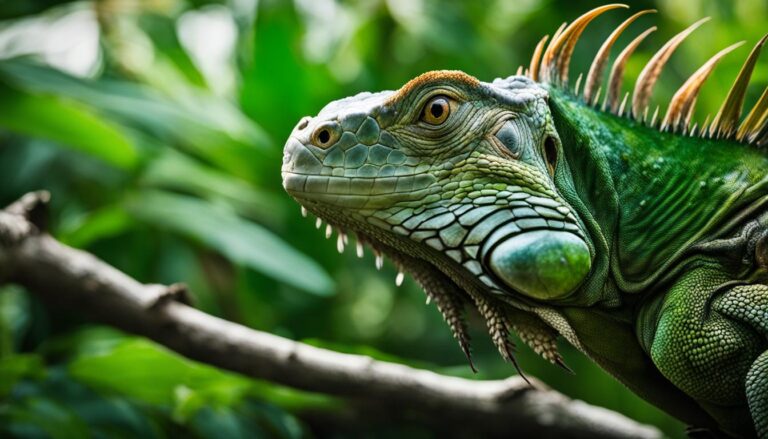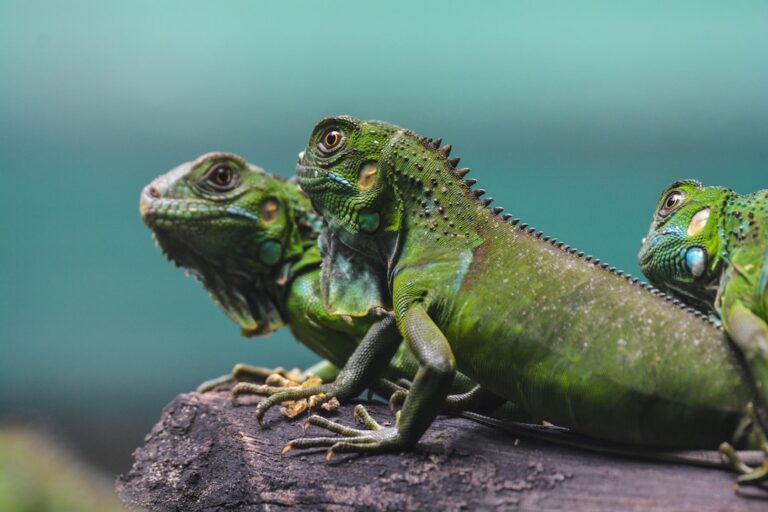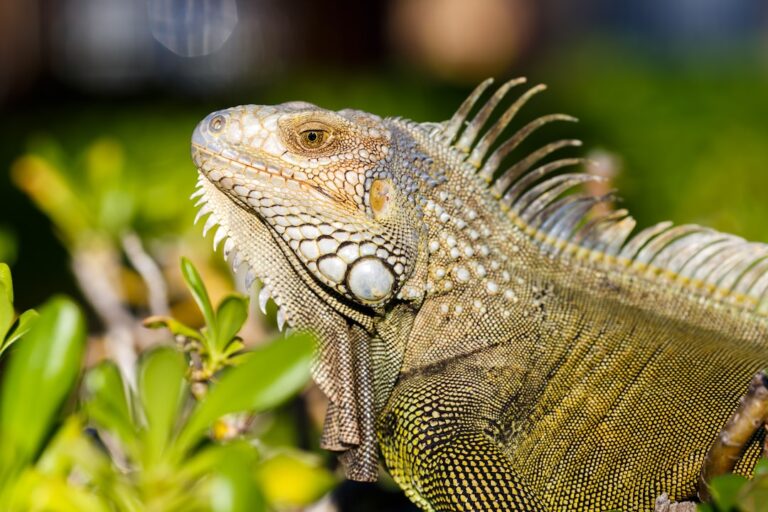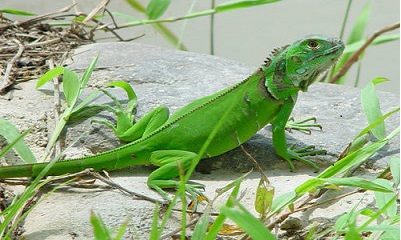Can Iguanas Choke?
Understanding the anatomy of an iguana is crucial for any iguana owner. One particular aspect of their anatomy that requires attention is their throat. Iguanas have a unique throat structure that can make them prone to choking incidents if not properly cared for. Choking can be a life-threatening situation for these reptiles, so it is important to be aware of the common causes, signs, and symptoms of choking in iguanas, as well as how to prevent such incidents from occurring in the first place.
Table of Contents
Understanding the Anatomy of an Iguana’s Throat
The throat structure of an iguana is quite different from that of other animals. Unlike mammals, iguanas do not have a diaphragm to help them swallow food. Instead, they rely on a series of muscles and bones in their throat to move food down into their stomachs. This unique anatomy can make them more susceptible to choking if they are not careful.
One important aspect of an iguana’s throat anatomy is the presence of a small flap of skin called the epiglottis. This flap covers the entrance to the windpipe when the iguana swallows, preventing food from entering the lungs. However, if an object or piece of food becomes lodged in the throat, it can block the entrance to the windpipe and cause choking.
Common Causes of Choking in Iguanas
There are several common objects or foods that can cause choking in iguanas. One common culprit is small pieces of food that are not properly chewed before swallowing. Iguanas have a tendency to gulp down their food without chewing it thoroughly, which can increase the risk of choking.
Another common cause of choking in iguanas is foreign objects. Iguanas are curious creatures and may try to eat objects that are not meant to be ingested. Small toys, rocks, or other small items can become lodged in their throat and cause choking.
Signs and Symptoms of Choking in Iguanas
It is important to be able to recognize the signs and symptoms of choking in iguanas so that you can take immediate action. Some common signs of choking include:
– Difficulty breathing or gasping for air
– Pawing at the mouth or throat
– Gagging or retching
– Drooling excessively
– Wheezing or making unusual sounds while breathing
If you notice any of these signs, it is important to act quickly to help your choking iguana.
What to Do if Your Iguana is Choking
If you suspect that your iguana is choking, it is important to act quickly to help them. Here are some steps you can take:
1. Stay calm: It is important to remain calm and composed during this situation. Your iguana will pick up on your energy, so it is important to stay calm and focused.
2. Check for blockage: Gently open your iguana’s mouth and check for any visible blockages. If you can see an object blocking the throat, try to remove it using a pair of tweezers or your fingers. Be careful not to push the object further down the throat.
3. Perform the Heimlich maneuver: If you cannot see a visible blockage, you can try performing the Heimlich maneuver on your iguana. Place your hands just below the ribcage and apply firm pressure upwards towards the head. This can help dislodge any objects that may be stuck in the throat.
4. Seek veterinary care: If your iguana continues to choke or if you are unable to remove the blockage, it is important to seek veterinary care immediately. A veterinarian will be able to provide further assistance and ensure that your iguana receives the necessary treatment.
Preventing Choking Incidents in Iguanas
Preventing choking incidents in iguanas is crucial for their health and safety. Here are some tips to help prevent choking:
1. Properly prepare food: Make sure to properly prepare your iguana’s food by cutting it into small, manageable pieces. This will make it easier for them to chew and swallow.
2. Monitor feeding: It is important to closely monitor your iguana while they are eating. This will allow you to intervene if you notice any signs of choking or if they are not properly chewing their food.
3. Avoid small objects: Keep small objects, such as toys or rocks, out of your iguana’s reach. Iguanas are curious creatures and may try to eat these objects, which can lead to choking.
4. Provide a safe environment: Create a safe environment for your iguana by removing any potential hazards that could cause choking. This includes small objects, loose bedding, or anything else that could be ingested.
The Importance of Proper Feeding Techniques for Iguanas
Proper feeding techniques are essential for the health and well-being of iguanas. In addition to preventing choking incidents, proper feeding techniques can also promote overall health and prevent other digestive issues.
When feeding your iguana, it is important to provide a balanced diet that includes a variety of fruits, vegetables, and protein sources. This will ensure that they receive all the necessary nutrients for optimal health.
It is also important to feed your iguana in a calm and quiet environment. Iguanas can be easily stressed, which can affect their ability to properly digest their food. By creating a calm feeding environment, you can help promote healthy digestion.
Potential Dangers of Feeding Iguanas Certain Foods
While iguanas can eat a wide variety of foods, there are some foods that can be dangerous for them to consume. It is important to be aware of these potential dangers and avoid feeding your iguana these foods.
Some common foods that can be dangerous for iguanas include:
– Avocado: Avocados contain a toxin called persin, which can be toxic to iguanas.
– Rhubarb: Rhubarb contains high levels of oxalic acid, which can interfere with calcium absorption in iguanas.
– Spinach and kale: While these leafy greens are generally considered healthy, they should be fed in moderation to iguanas due to their high oxalate content.
It is important to do your research and consult with a veterinarian to ensure that you are providing a safe and balanced diet for your iguana.
How to Safely Introduce New Foods to Your Iguana
Introducing new foods to your iguana’s diet should be done gradually and with caution. Abrupt changes in diet can cause digestive upset and potentially lead to choking or other health issues.
When introducing a new food, start by offering a small amount and monitor your iguana’s response. If they tolerate the new food well, you can gradually increase the amount over time.
It is also important to research the nutritional needs of your iguana and ensure that any new foods you introduce are safe and appropriate for them to consume.
When to Seek Veterinary Care for a Choking Iguana
In some cases, choking in iguanas may require immediate veterinary care. If you are unable to dislodge the blockage or if your iguana continues to choke, it is important to seek veterinary care as soon as possible.
A veterinarian will be able to assess the situation and provide the necessary treatment. They may need to perform an endoscopy or other procedures to remove the blockage and ensure that your iguana’s airway is clear.
Promoting Overall Health and Wellness in Iguanas
In addition to preventing choking incidents, there are several other ways to promote the overall health and wellness of your iguana.
– Provide a proper habitat: Ensure that your iguana has a spacious and properly equipped enclosure that meets their needs. This includes providing appropriate lighting, heating, and humidity levels.
– Regular veterinary check-ups: Schedule regular check-ups with a reptile veterinarian to ensure that your iguana is in good health. Regular examinations can help detect any potential health issues early on.
– Environmental enrichment: Provide your iguana with plenty of opportunities for mental and physical stimulation. This can include providing climbing structures, hiding spots, and toys for them to interact with.
– Maintain proper hygiene: Keep your iguana’s enclosure clean and provide fresh water daily. Regularly clean and disinfect their enclosure to prevent the buildup of bacteria or parasites.
Understanding the anatomy of an iguana’s throat and taking steps to prevent choking incidents is crucial for the health and safety of these reptiles. By being aware of the common causes, signs, and symptoms of choking, as well as implementing proper feeding techniques and providing a safe environment, you can help ensure that your iguana remains healthy and happy. Remember to always prioritize your iguana’s health and safety by seeking veterinary care when necessary and promoting their overall well-being.
If you’re curious about the potential choking hazards for iguanas, you might also be interested in learning about the dietary habits of chameleons. Did you know that chameleons can eat mealworms? Find out more about this fascinating topic in our article, “Can Chameleons Eat Mealworms?“. Discover the unique feeding behaviors and nutritional needs of these captivating reptiles.

